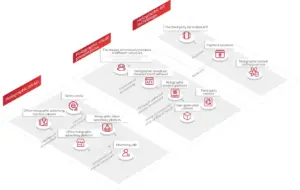WiMi Hologram Cloud has developed a dedicated system-on-a-chip field-programmable gate array (SoC-FPGA) that performs real-time single-pixel holographic imaging. The SoC-FPGA can be used in a wide range of applications, including IoT and outdoor applications. One specific possibility is the use of topographic satellite surveys for object tracking and building automotive navigation IoT systems.

The SOC-FPGA is an integrated circuit that combines a CPU and a field-programmable gate array (FPGA) into a single chip. The CPU handles tasks like generating images and initializing holographic displays, while the FPGA, with its flexibility and high performance, does the complex calculations required to reconstruct holographic images. Because both these components are embedded in one chip, this design can be much smaller than a traditional computer system, which makes it more suitable for applications like IoT devices.
The holographic imaging process begins with a camera lens capturing an image of a target object. This image is then modulated by a mask pattern, encoded into the digital micro-mirror device (DMD). The modulated light is collected by another lens and measured by a single-device detector. This light intensity is then converted into a digital signal that the FPGA uses to reconstruct the image of the target object.
To make this process more efficient, WiMi uses a ghost imaging correlation algorithm, which requires low memory and has a simple computational form. This algorithm introduces a coding mask pattern optimization which improves image quality. This method of imaging requires two spatially separated beams, a reference beam and an object beam. It uses inter-correlation techniques to reconstruct the target image. The reference beam passes through a device that produces random light intensity patterns. These patterns are transmitted to the object beam and detected by a single-photon detector. The detected light intensity values are then correlated with the reference beam’s light intensity patterns to obtain information about the target image.

